BLOG ARTICLE
5 Fatal Mistakes To Avoid When Scheduling Social Media Posts
Last updated: 12/22/2025
Last updated: 12/22/2025
Scheduling social media posts is a smart way to save time and stay consistent. But there’s a dark side to scheduling; it can easily backfire.
Even worse, one poorly timed or outdated post can damage your brand’s reputation in minutes.
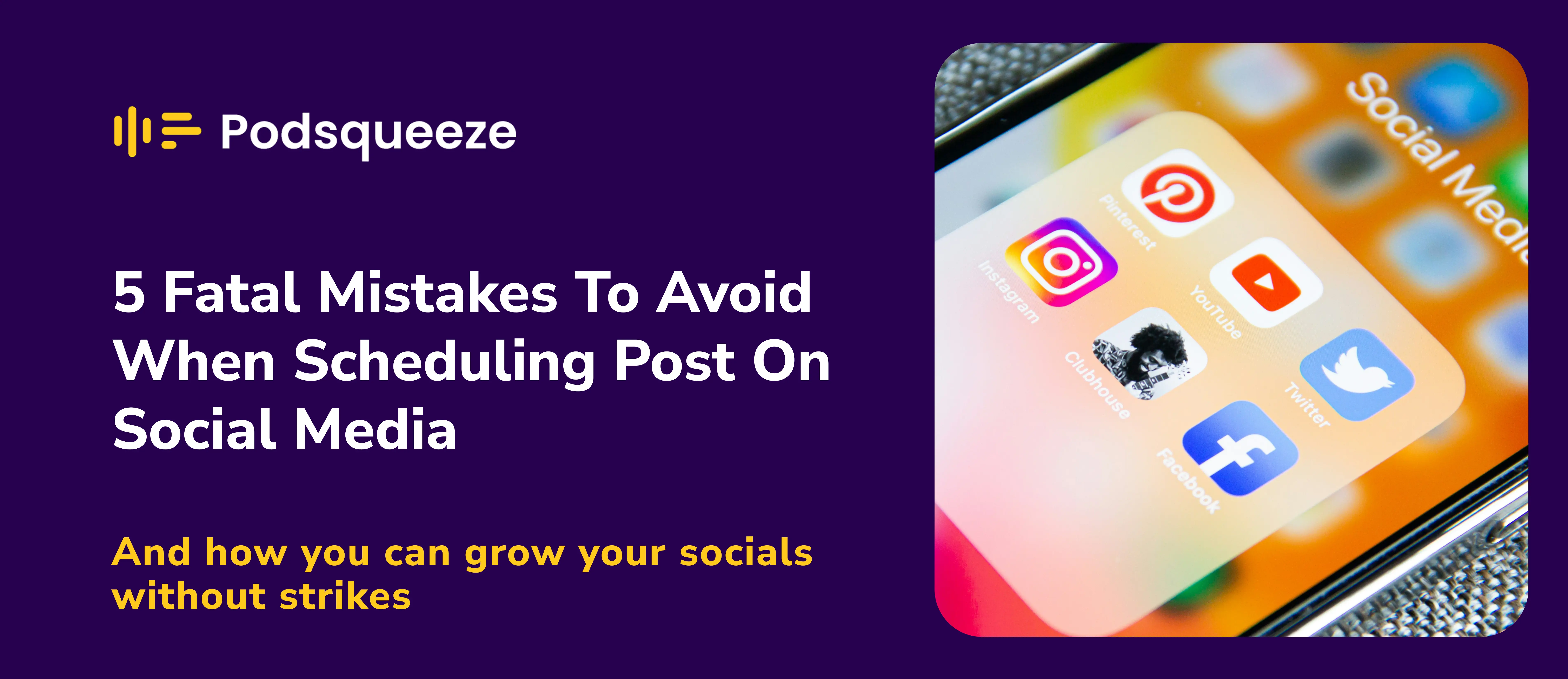
Today, 80% of marketers use some form of content scheduling tool. The number is impressive, but if you’re like me, after lining up your scheduled content, you forget about it and go about your day.
Well, that’s why you scheduled in the first place, but if your post goes live during a crisis, there are broken links included, or it sounds robotic, people do notice.
That’s why in this article, I’ll talk about 5 fatal mistakes most people make when scheduling their social media and how to avoid them.
5 Fatal Mistakes To Avoid When Scheduling Social Media Posts
When it comes to social media scheduling - whether for your podcast, business, company profiles, or just your personal accounts - convenience can quickly turn into carelessness. If you're not careful, scheduled posts can clash with current events and make your brand look out of touch. Before you hit “schedule,” make sure you're not making one of these five critical mistakes.
1. Over‑scheduling Without Flexibility
Some people schedule posts months ahead. This overscheduling may seem efficient, but research shows it often leads to disengagement. According to SocioBo Social Media Growth, one major risk of overscheduling is audience fatigue.
Brands flood their followers’ feeds without room for trendy content, making their presence feel robotic and impersonal.
Your followers start feeling that they're interacting with a bot because all posts are pre-planned. If your content calendar is rigid, you can’t respond to trending news, pop culture moments, or sudden high-engagement topics.
That’s why too many scheduled posts can reduce engagement rates sometimes.
So, keep your scheduling flexible. Plan 70–80% of your content ahead of time and leave 20–30% open for spontaneous posts. Make attractive headlines that represent your intent to follow the trend. Better to take help from AI tools, such as the AI title generator.
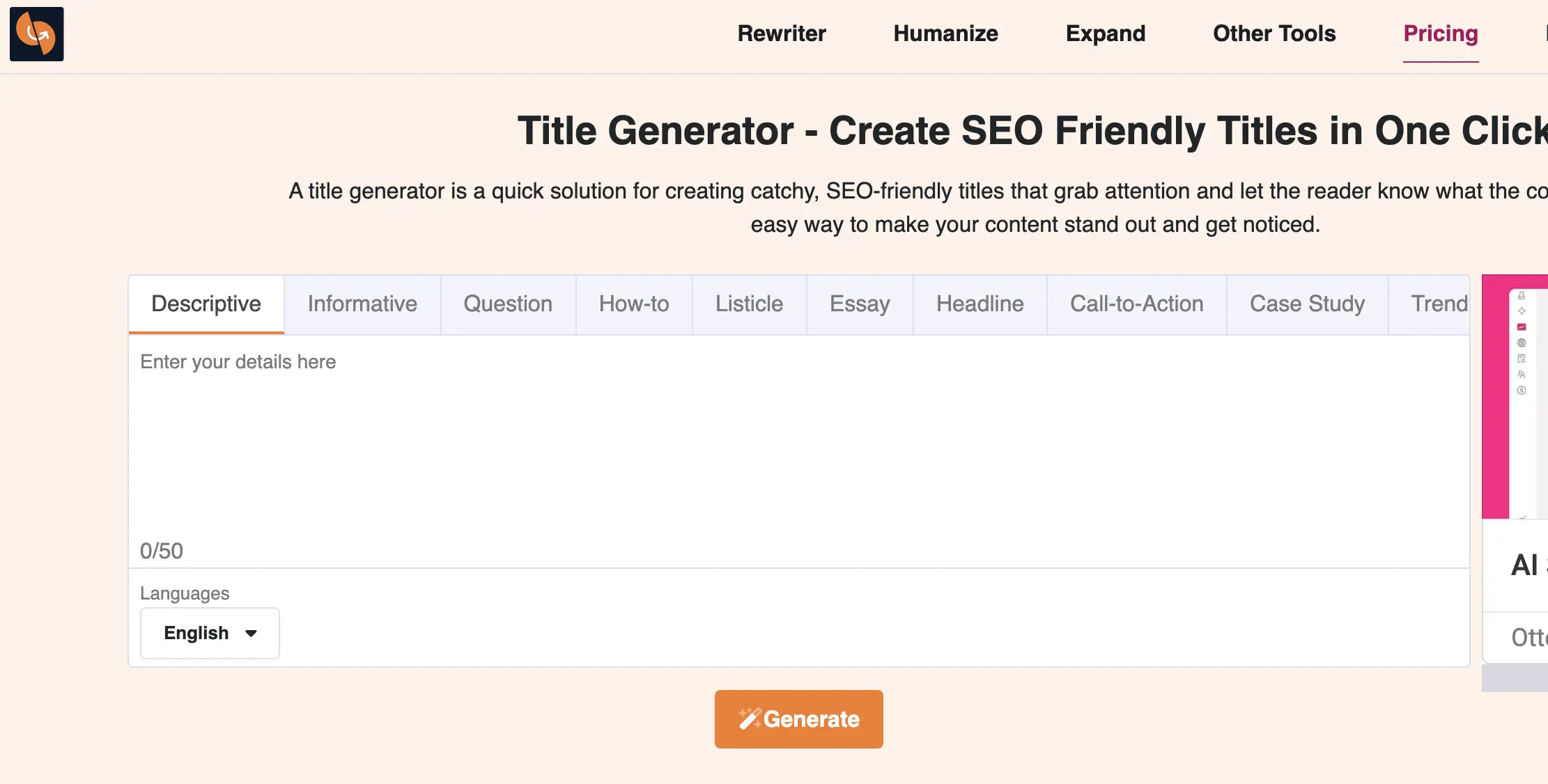
This tool by sentencerewriter.net understands your context and human sentiments behind it using natural language processing technology (NLP). Then, suggest titles that reflect your topic the best.
Other than that, use scheduling tools that allow easy edits or pausing when needed. And always monitor the trends online so you can stay relevant and real-time, not just consistent.
- Publishing Identical Content Across All Platforms
Another fatal mistake is publishing the exact same content across all social media platforms. It is a time-saving hack, but it actually hurts your engagement with users and reach.
Because each platform has its own language, audience behavior, and content style, what you post on Instagram does not work on LinkedIn, as users expect a more professional tone there.
People love perspectives and breaking news on X. Instagram thrives on visuals, while Facebook is better for community conversations.
So, instead of just copying and pasting your posts from one place to another, repurpose your content with a different format and tone for each platform.
It just takes a few seconds with a free AI text humanizer. This tool rewrites your message in many different tones, like professional, academic, fluent, formal, and casual, within a few clicks. The best thing about humanizador.net is that its rewritten sentences sound human in any language you choose.
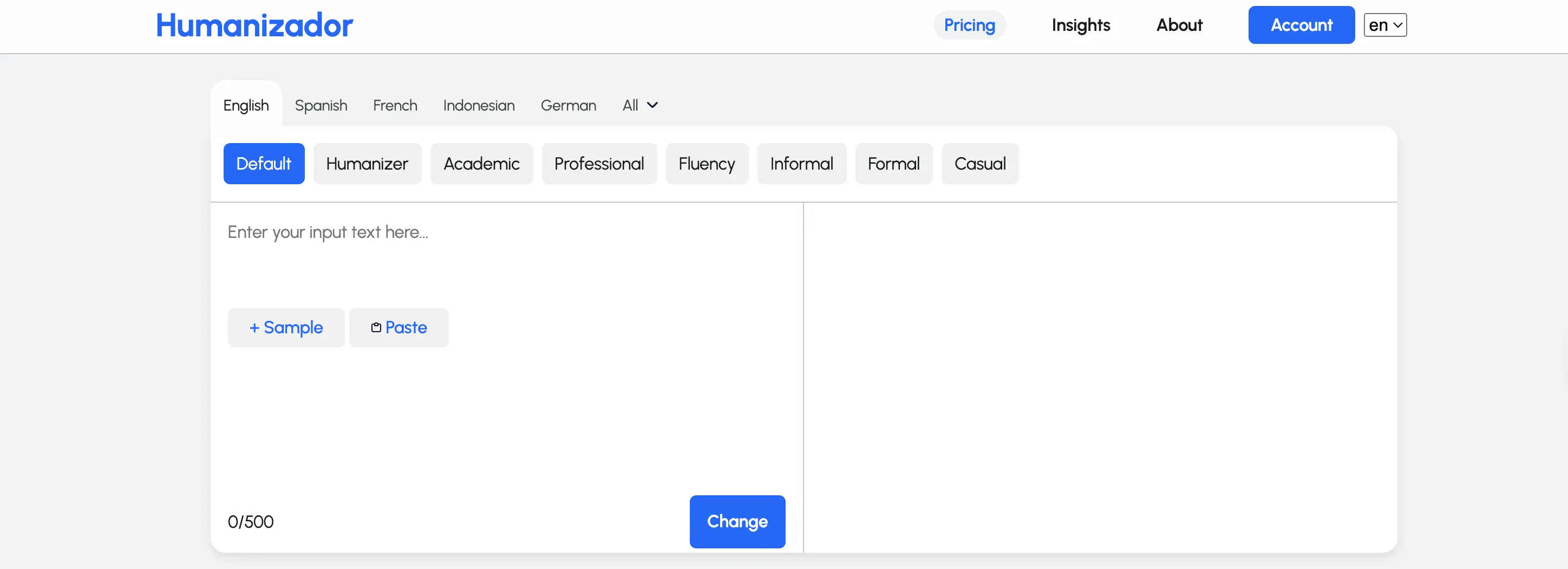
With this tool, use the same core idea, but adjust the format, tone, and call to action. Your content will feel native to each platform and get much better results.
- Ignoring Audience Behavior And Analytics
When you have scheduled posts for a month, you do not review the audience’s response and social media metrics for that month until you are ready to schedule content for the next month.
That’s a huge mistake. Social media platforms give you detailed data on when your audience is most active, what type of content they engage with, and what drives clicks or conversions.
If you don’t use that data, you will end up scheduling posts at the wrong times or pushing content your audience doesn’t care about.
Instead, look at your analytics regularly. See what time slots get the most reach, what formats your audience interacts with, and which posts bring in traffic. Then change your schedule accordingly.
For example, Exploding Topics says that people are less likely to interact with AI content, and if you share AI-generated content for a month, you get fewer interactions.
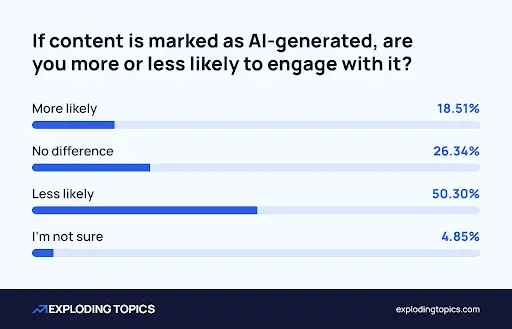
So you need to analyze this early and humanize your content. Use an AI detection tool to identify content that sounds robotic and change it before publishing. AI-detector.info can identify even minor AI similarities in your content and highlight them for your ease.
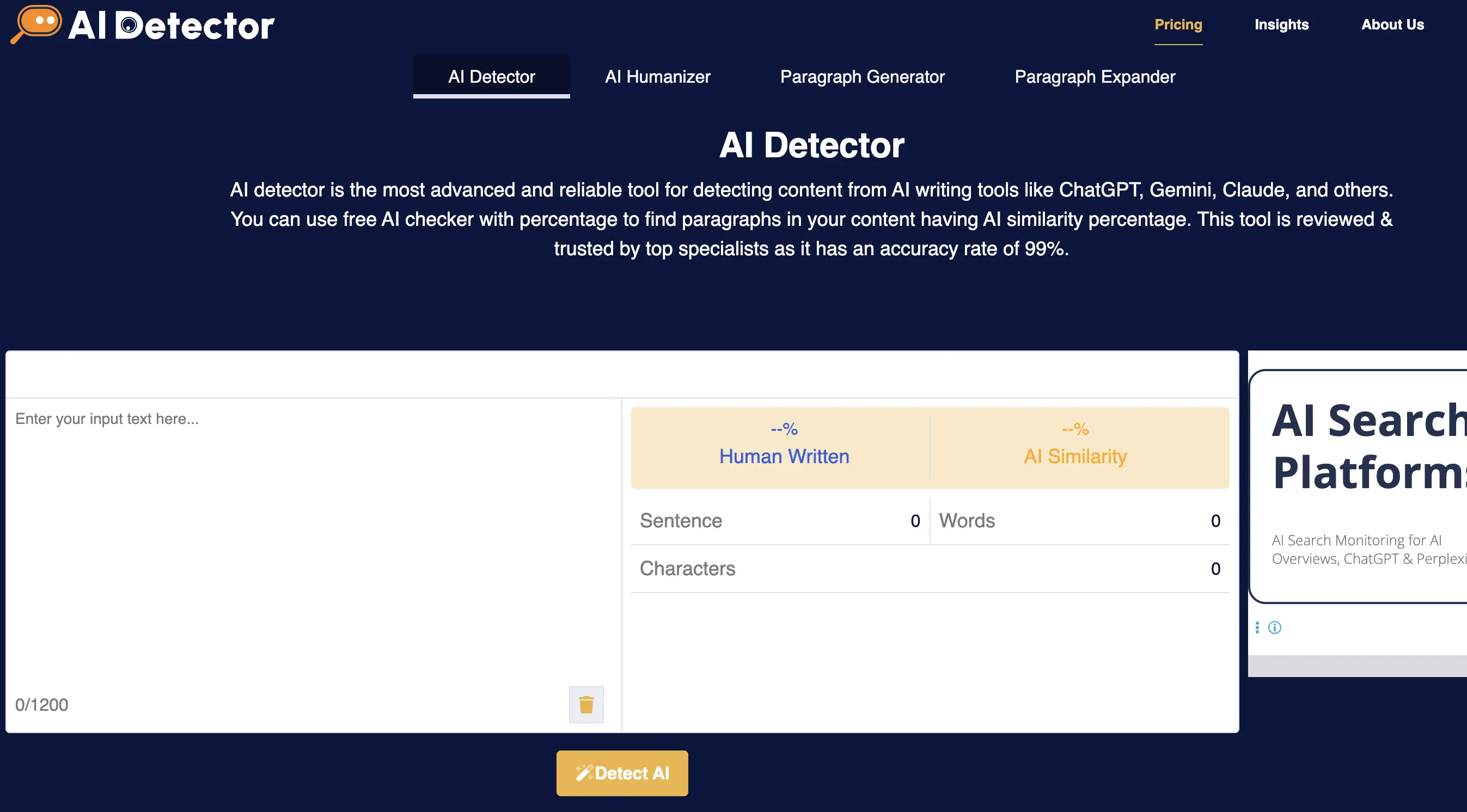
4. Sharing Content Without Reviewing
Many social media managers bulk-schedule posts weeks or even months in advance and set the posts to recur. Because of this, sometimes you end up sharing a Christmas giveaway in February or promoting a New Year’s sale in April.
This happens most often when you try to reuse old content without checking the dates.
However, you can simply fix this by always reviewing your calendar before a new week or month begins. Set a monthly reminder to double-check what’s in the queue. Make sure every post is according to current events, seasonal trends, and your marketing goals.
- Not Engaging With People Regularly
Not engaging with people regularly is one of the biggest mistakes brands make when relying too heavily on scheduling tools.
Just because your content is planned and queued up for weeks or months doesn’t mean your job is done. Social media is a two-way street. Users expect interaction, replies, and human presence from you.
If you disappear after scheduling your posts, your audience will notice. In fact, according to Hootsuite, brands that actively engage with users on social media get 1.6x more engagement.
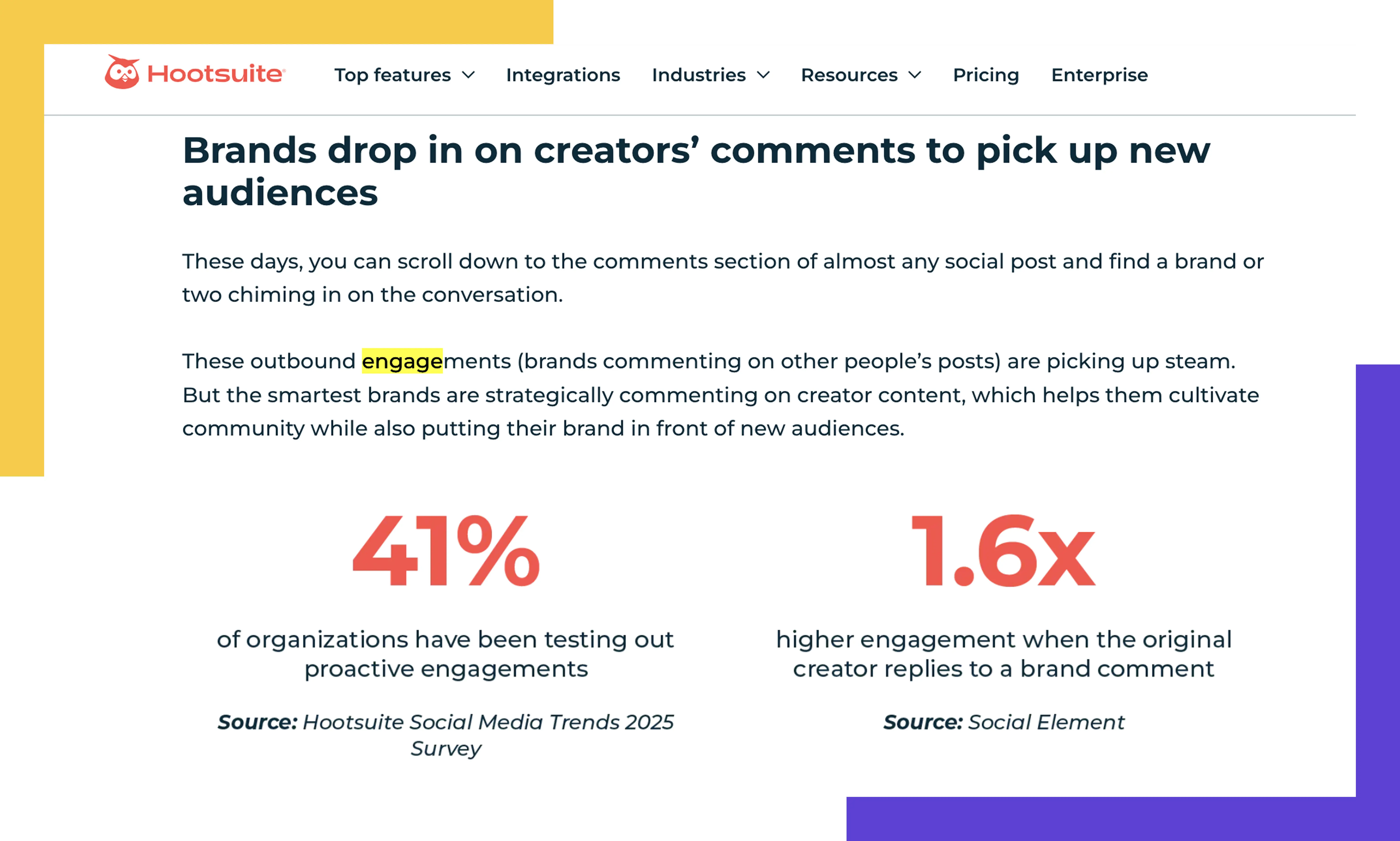
So don’t just “set and forget.” Make time to check comments, respond to DMs, and engage with relevant posts. Stay active on each platform.
And when you do that, make sure your replies have no grammatical mistakes. Because 97% of people say grammar mistakes influence their perception of a brand.
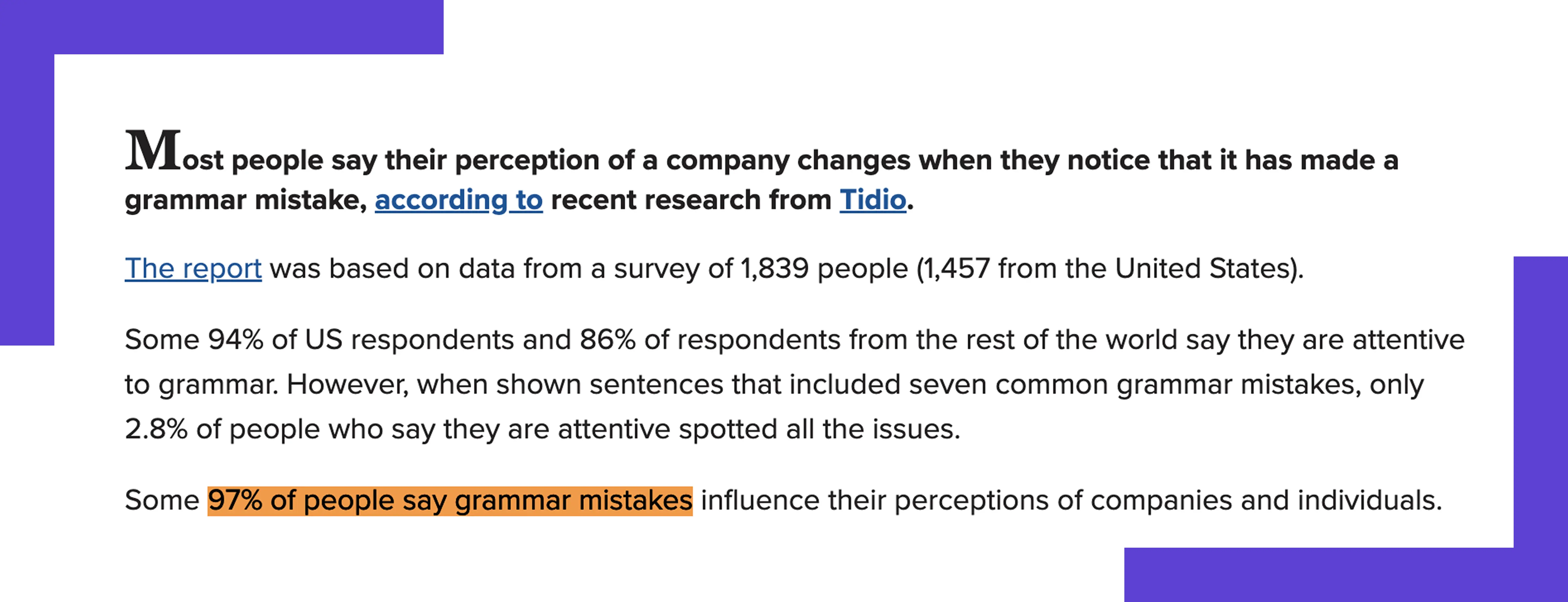
Use an AI-powered grammar checker tool on each of your messages and stay confident.
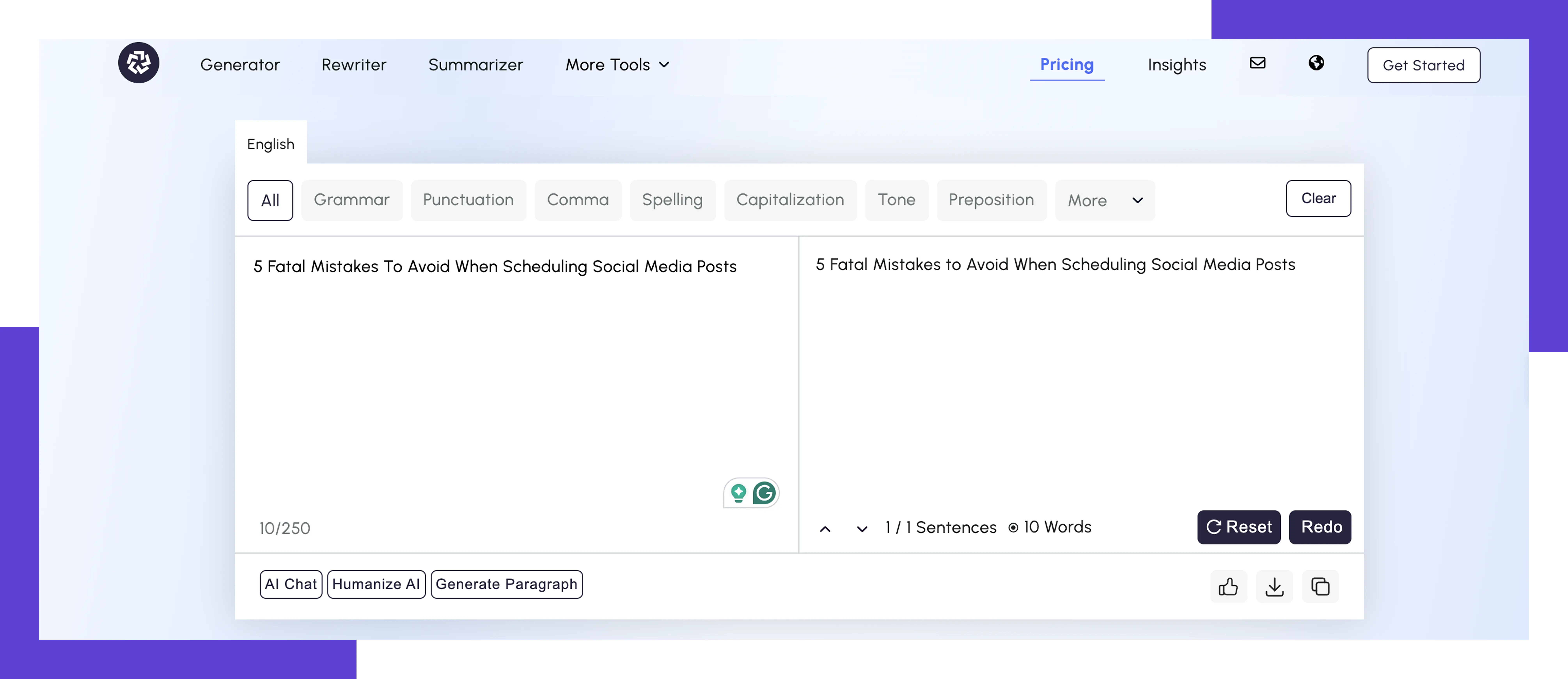
A grammar checker at paragraph-generator.com is very effective for such tasks because not only does it look for grammar mistakes, but also for clarity and readability mistakes.
Conclusion
Scheduling tools are great. But automation without awareness can damage your brand more than help it.
In 2025, social media is no longer just about posting consistently—it’s about staying relevant, human, and responsive. That means, no matter how perfectly you plan your content calendar, your strategy won’t work if you’re not actively monitoring and interacting.
Try my methods and the tool I have discussed to use scheduling to your advantage.
Repurpose your podcast content with AI